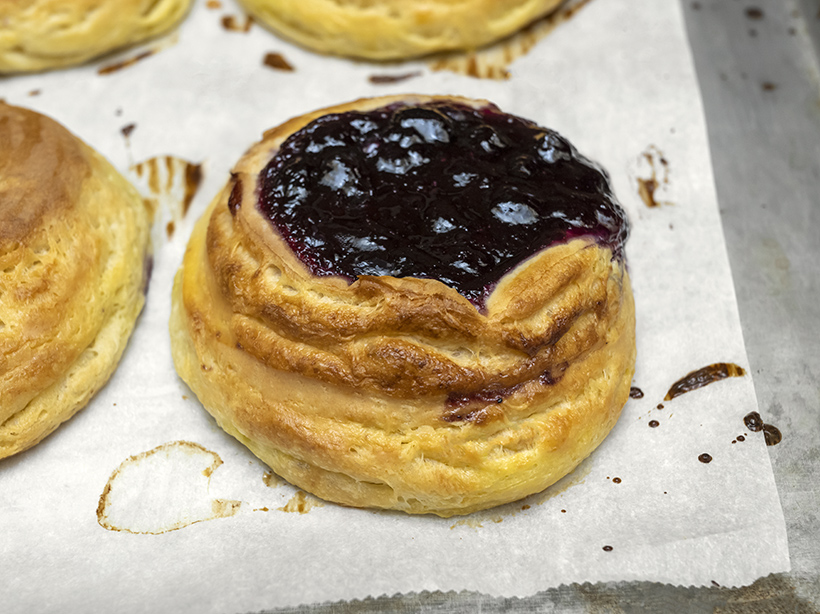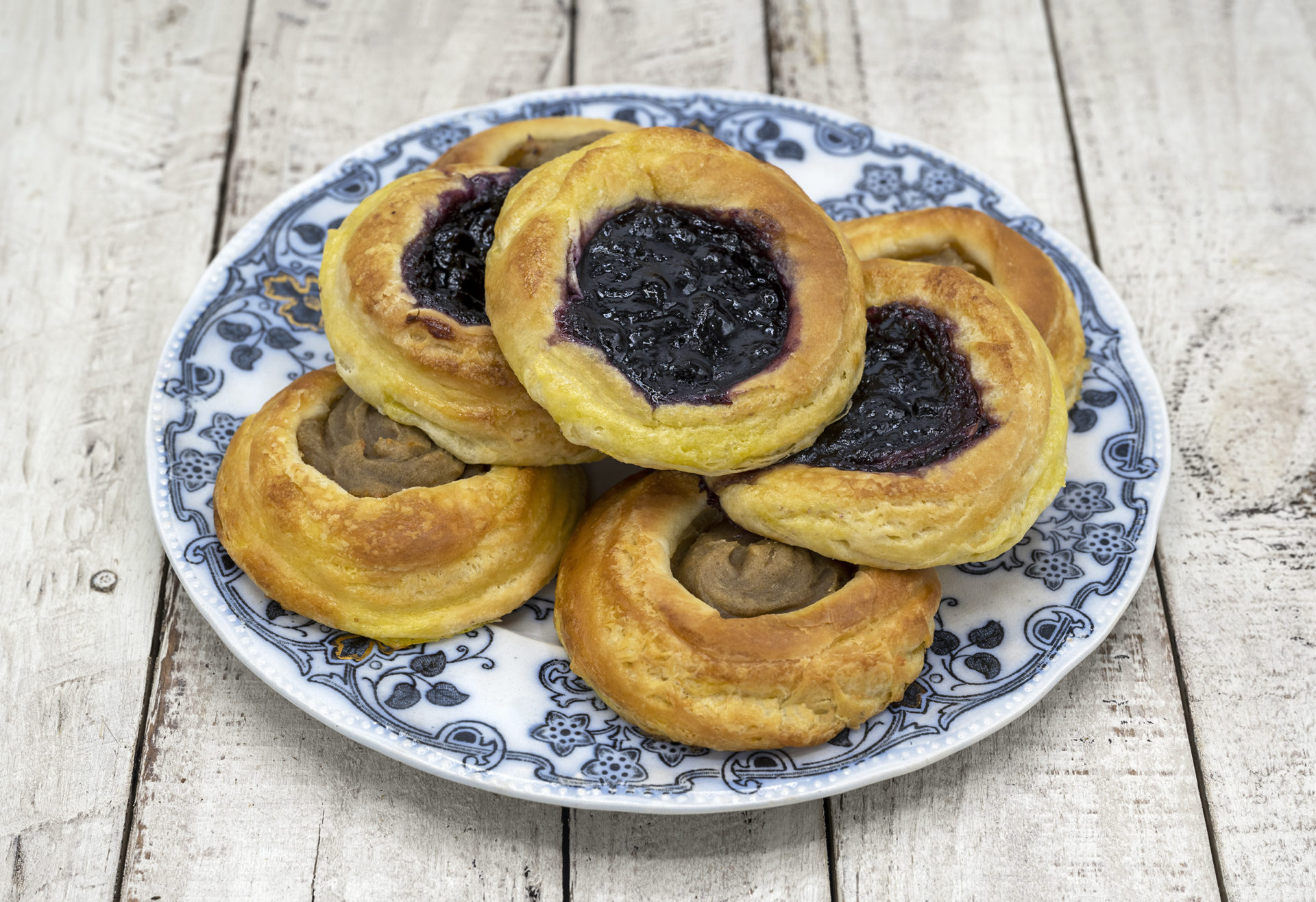If you’ve been to Texas (or, nowadays, even Brooklyn), you might have noticed stores selling pastries under the strange name of kolache. Maybe you thought this was a Latino thing, like toloache, the Mesoamerican plant used as a hallucinogen, medicine, and aphrodisiac. In fact, this staple of Central Texan gastronomy actually hails from Czech Republic, where a koláček (the diminutive form of koláč, pronounced kolach; plural koláčky) is a round yeast pastry with a sweet filling in the center!
The exact origin of the koláček is hard to trace. The word koláč comes from kolo (which means “wheel” or “round” in Czech and other Slavic languages), and like many other round baked products around the world, it’s supposed to symbolize the sun. Throughout Eastern Europe, with the introduction, around the 15th century, of yeast breads enriched with butter, eggs, and sugar, it started to designate a round, sweetened yeast bread consumed on special occasions. Czechia, Slovakia, Poland, Hungary, and Croatia all made their own versions of kolache, with various spellings (and the Russian kulich can be seen as its Orthodox cousin). Bohemians and Moravians paired the pastry with povidla, a kind of plum butter. In the 18th century, bakers began making it with the filling already added in a small dip in the center of the dough. Over time, new toppings and fillings emerged: poppy seeds, farmer cheese…
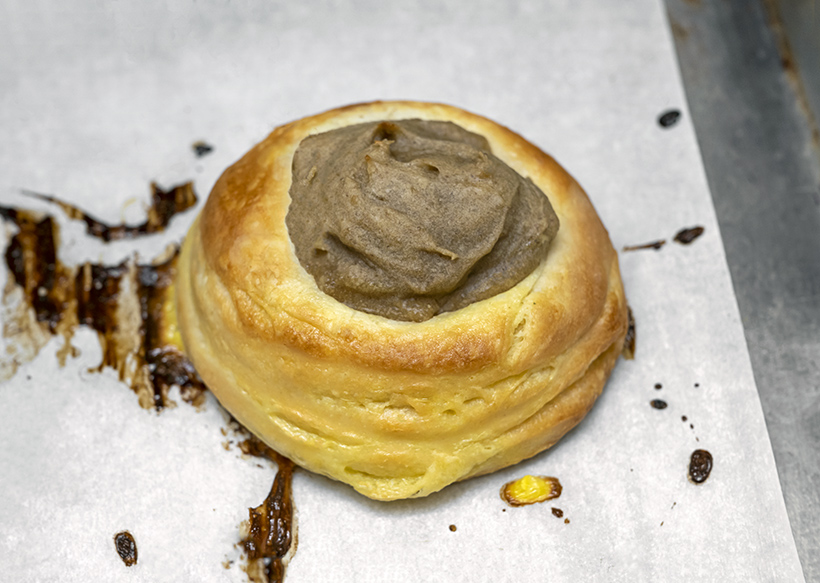
How did the koláček make its way to the Lone Star State, you may ask? In the beginning (aka just before the middle of the 19th century) came the Germans. Some were drawn to Texas by the promise of new economic and social opportunities. Others were political refugees fleeing the revolutions that rattled Europe in 1848. As Czechia was then part of the Austro-Hungarian Empire, it’s no surprise that Czech immigrants followed suit during the mid-to-late nineteenth century, for many of the same reasons. They settled in rural areas, largely as farmers and craftsmen, and brought with them their native cuisine and its roasted meats with noodles and dumplings, its sausages with potatoes and sauerkraut, and its baked goods such as fruit strudels. All told, their cooking didn’t differ that much from the Germans’ (whose meats, by the way, are the ancestors of barbecue), except for a few dishes like koláček. In Europe, the ingredients that koláček called for (sugar, eggs, butter, white flour) were very expensive for the regular Josef, so the treats were reserved for special occasions like Epiphany, Shrove Tuesday, or weddings. In America, they became a more common comfort food for the Czech diaspora.
Today, in Czech Republic, koláčky are consumed year-round even outside of holidays, and in Texas, the kolache has outgrown its status as edible symbol of American Czech culture to become one of the most popular pastries in the state. There are kolache festivals and baking contests all over Central Texas, such as the annual Westfest for Labor Day. Although yeast pastries imported from Europe have routinely been bastardized by Americans who were too much in a hurry to wait for dough to rise, Texan recipes tend to remain true to the Czech original, such as this one. Only the toppings have acquired some local color and variety: some kolaches are still filled with the traditional prune, fruit, or cheese mixtures, while others feature savory flavors like spinach-artichoke or jalapeño-sausage-cheddar. You can learn more about American kolaches here and here.
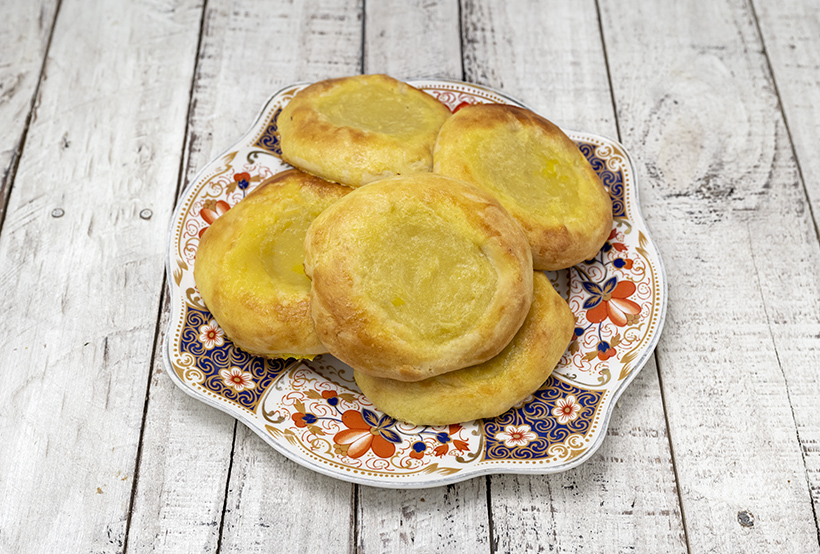
My koláčky are adapted from traditional Czech recipes but use a wetter dough for an airier result – picking one up, you’re actually surprised by how light they are in your hand. I also like to have a generous amount of filling rather than a tiny bit in the center, so I’ve slightly modified their shape to include a wider dip. Finally, while some recipes sprinkle streusel, slivered almonds, or powdered sugar on top of the pastries, I find it rather unnecessary. Koláčky are already plenty sweet and I think my toppings are so good that they don’t need anything else!
Some of these toppings follow tradition, but with a twist: blueberry preserves (using my own recipe), poppy seeds with a touch of cocoa, farmer cheese with dulce de leche (yes, dulce de leche is Czech too: it’s just called caramelized condensed milk). Some are more my own creations using traditional Czech flavors: homemade chestnut cream (I love chestnut cream), or, most distinctively, my fantastic Becherovka custard. I consider the latter my claim to fame in what already aims to be the definitive blog post about koláčky. This liberally spiked modified pastry cream truly tastes like the infamous liqueur from Karlovy Vary! (You could consider reducing the amount of Becherovka a little, depending on your fondness for herbal spirits.)
But there’s more! In addition to the regular yeast dough, I make a laminated yeast dough. This turns the pastries into something a bit closer to Danishes, widely popular Danish pastries of Austrian origin that also use a laminated yeast dough with filling in the middle. Authentic? No. Delicious? Yes! These laminated koláčky with Becherovka custard might very well be used as medicines and aphrodisiacs after all!
One last word… Koláčky are best consumed a few minutes after they come out of the oven, or at least on the same day they were made. If you have to keep them longer, store them at room temperature, wrapped in foil, and pop them in the oven for a couple minutes before eating.
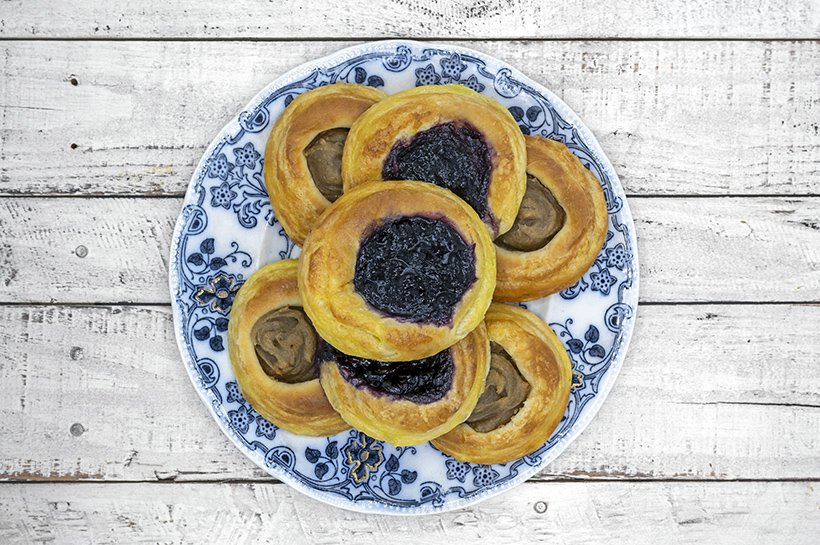
Traditional koláček
Yields 12 pastries
Total preparation: 4 hours 30 minutes
Active preparation: 1 hour
(preparation times exclude filling preparation)
Koláček sponge
8 g active dry yeast
80 g milk, lukewarm
1 g sugar
40 g AP flour
- In a small bowl, combine the yeast, milk, and sugar, and let rest a couple minutes.
- Mix in the flour with a fork. Cover and let rise until doubled in volume, about 30 minutes.
Traditional koláček dough
90 g butter, softened
40 g sugar
koláček sponge
15 g (about 1) egg yolk
260 g AP flour
115 g water, lukewarm
3 g vanilla extract
5 g salt
- In the bowl of a stand mixer fitted with the paddle attachment, beat the butter on high speed until creamy. Add the sugar and beat for another minute.
- Switch to low speed. One ingredient at a time, add the koláček sponge, egg yolk, about 1/3 of the flour, water, and vanilla extract, waiting until the dough becomes homogeneous between each addition and scraping the walls of the bowl with a rubber spatula.
- Still on low speed, add the salt and the remaining flour. Keep mixing for about 12 min, until the dough starts forming a ball around the paddle, scraping the walls with a spatula after a few minutes. The photos below show the mixing after 1, 6, and 12 minutes; as you can see, not much happens during the first minutes.
- Mix for one last minute, then cover and let rest for 2 hours.
Traditional koláček assembly
traditional koláček dough
koláček fillings (see below)
15 g (about 1) egg yolk
30 g milk
- Line your baking tray(s) with parchment paper. Measure twelve 50 g pieces of dough. Shape each one into a ball and place on the parchment paper, flatten with your palms, and stretch to shape into a 7-8 cm round, using your thumbs to press a large crater in the center (see photo below). Proof in a 38 C / 100 F environment for 30-45 minutes. You can also let rest on the stovetop while the oven is heating.
- For each koláček, press your thumb in the center to reform the crater, and spoon the filling of your choice (25 g for the poppy seed filling, 30 g for all the other fillings). The filling should cover a large area of the koláček, so that you will have some in each bite when you eat.
- Bake in a 375 F / 190 C oven for 8 minutes. If you have more than one baking tray, you may have to proceed with this step and the next in batches.
- Mix the egg yolk and milk in a small bowl. Take the tray out of the oven, brush each koláček (only the dough, not the filling) with this egg wash. Return to the oven for 10 more minutes, until the pastries are golden brown and their internal temperature reaches at least 96 C / 205 F.
- Transfer to a wire rack, and let cool for a few minutes. Eat immediately!
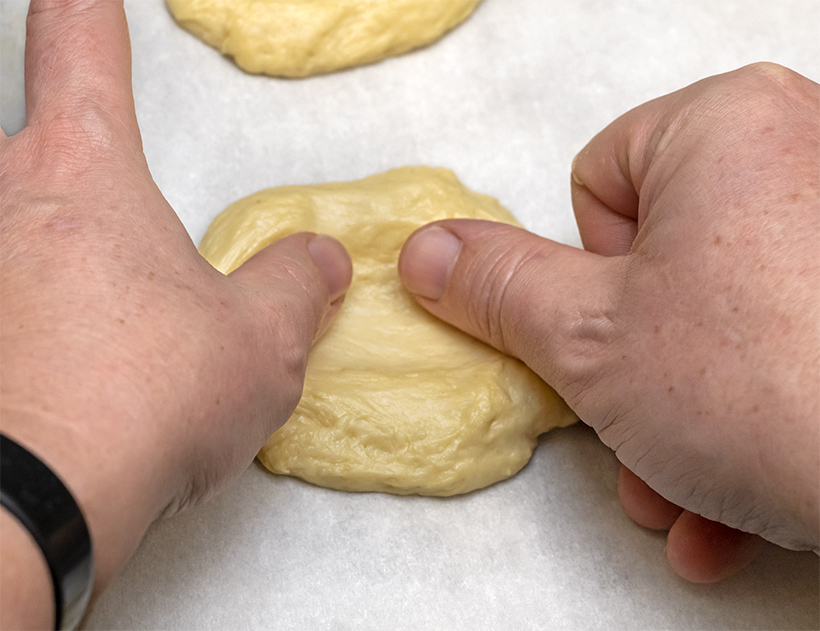
Laminated koláček
Yields 12 pastries
Total preparation: 16 hours
Active preparation: 1 hour
(preparation times exclude filling preparation)
Laminated koláček dough
traditional koláček dough
145 g butter, softened
flour, for dusting
- Refrigerate the traditional dough for at least 2 hours.
- On a floured surface, roll the dough to 20 cm x 25 cm. With the shortest edge facing you, spread the butter on the bottom 2/3, leaving 1 cm borders clear on all sides. Fold in three, envelope style, by first bringing the top third onto the middle, then covering it with the bottom third. Brush off any excess flour. Be neat; make sure your rectangle (and the next ones) are as perfect as possible: stretch the corners with your fingers if they’re too round, gently press the sides with a ruler to straighten.
- Give the dough a quarter turn and roll back into a 20 cm x 24 cm rectangle (yes, it’s shorter by 1 cm), with the short side facing you. Fold in thirds again, as above. Cover with plastic wrap, and refrigerate for about 30 minutes.
- Repeat the previous step three more times. If any butter oozes out while rolling, sprinkle with a little bit of flour to prevent sticking. Cover with plastic wrap, and refrigerate for at least 8 hours.
Laminated koláček assembly
flour, for dusting
laminated koláček dough
koláček fillings (see below)
15 g (about 1) egg yolk
30 g milk
- Line your baking tray(s) with parchment paper. On a floured surface, roll the dough to a 30 cm x 22.5 cm rectangle, letting it rest for a few minutes if it’s too cold or if it starts shrinking. Using a ring mold of 7.5 cm diameter, cut out 12 discs and transfer them to the baking trays.
- For each koláček, press your thumb in the center to form a crater, and spoon the filling of your choice (25 g for the poppy seed filling, 30 g for all the other fillings). The filling should cover a large area of the koláček, so that you will have some in each bite when you eat. (I find that unlike with the traditional dough, it’s best to add the filling before proofing the laminated dough.)
- Proof in a 38 C / 100 F environment for 30-45 minutes. You can also let rest on the stovetop while the oven is heating.
- Bake in a 400 F / 200 C oven for 8 minutes. If you have more than one baking tray, you may have to proceed with this step and the next in batches.
- Mix the egg yolk and milk in a small bowl. Take the tray out of the oven, brush each koláček (only the dough, not the filling) with this egg wash. Return to the oven for about 7 more minutes, until the pastries are golden brown and their internal temperature reaches at least 99 C / 210 F.
- Transfer to a wire rack, and let cool for a few minutes. Eat immediately!
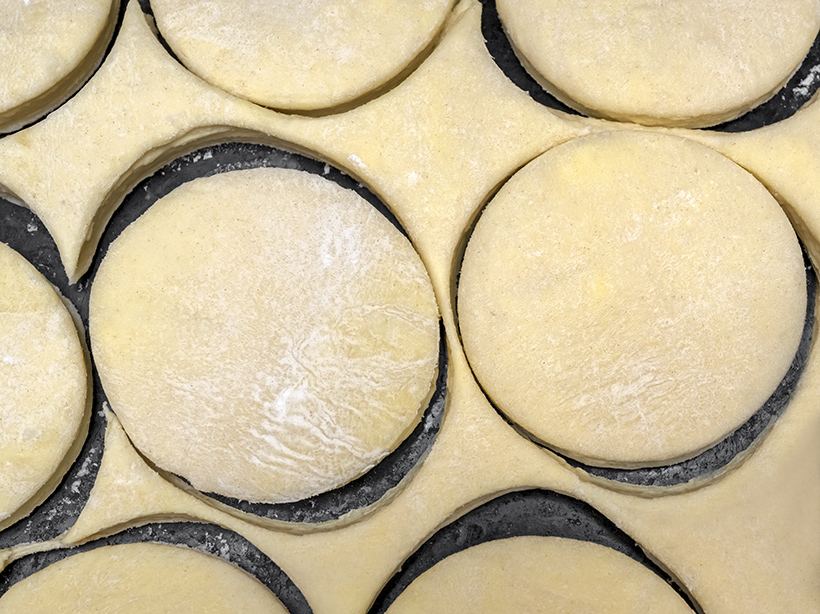
Koláček fillings
Yields 6 pastries each
Total preparation: 2 hours for the dulce de leche and cheese filling, about 1 hour 15 minutes for the others
Active preparation: 5-15 minutes, depending on the filling
Becherovka custard filling
50 g (about 1) egg, lightly beaten
8 g AP flour
8 g cornstarch
85 g milk
60 g sugar
pinch of salt
35 g Becherovka
15 g butter
- Using a whisk, combine the beaten egg, flour, and cornstarch in a bowl until homogeneous.
- In a saucepan over medium heat, stir together the milk, sugar, and salt. Once the milk is simmering and the sugar is dissolved, slowly pour into the bowl of egg mixture, whisking constantly.
- Return to the saucepan, turn the heat to low, and keep stirring with a rubber spatula until the mixture reaches 85 C / 185 F. Make sure to scrape the walls and bottom of the saucepan as you stir. Remove from the heat, then mix in the Becherovka and butter. Transfer to a plastic container, let cool, then refrigerate for 1 hour.
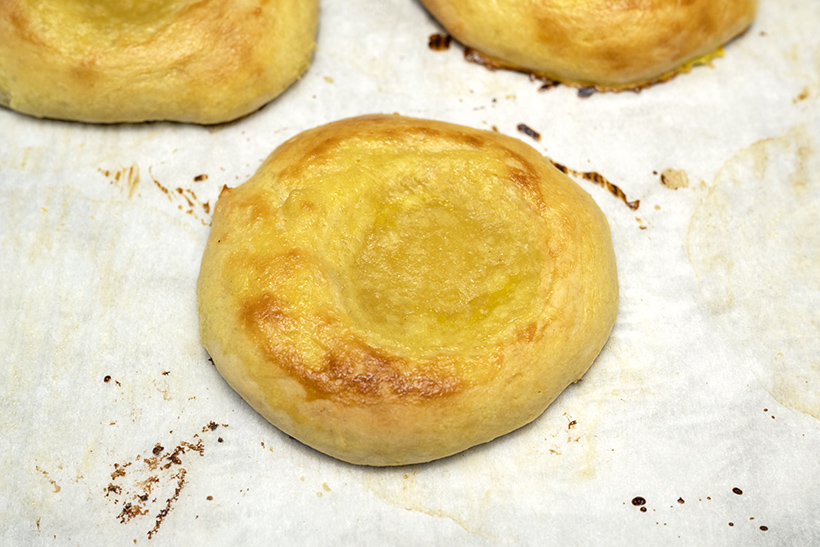
Dulce de leche and cheese filling
90 g sweetened condensed milk
130 g farmer cheese
5 g corn starch
- Pour the sweetened condensed milk into a small Mason jar, seal with a lid, then unscrew the lid by a 1/4 turn. Place a wire rack with the jar on it in a pressure cooker filled with about 1 cm of water. Cover with a lid and bring to pressure over high heat. Reduce the heat and cook for 45 minutes. Let cool for a few minutes before releasing the pressure. Congratulations, you just made dulce de leche!
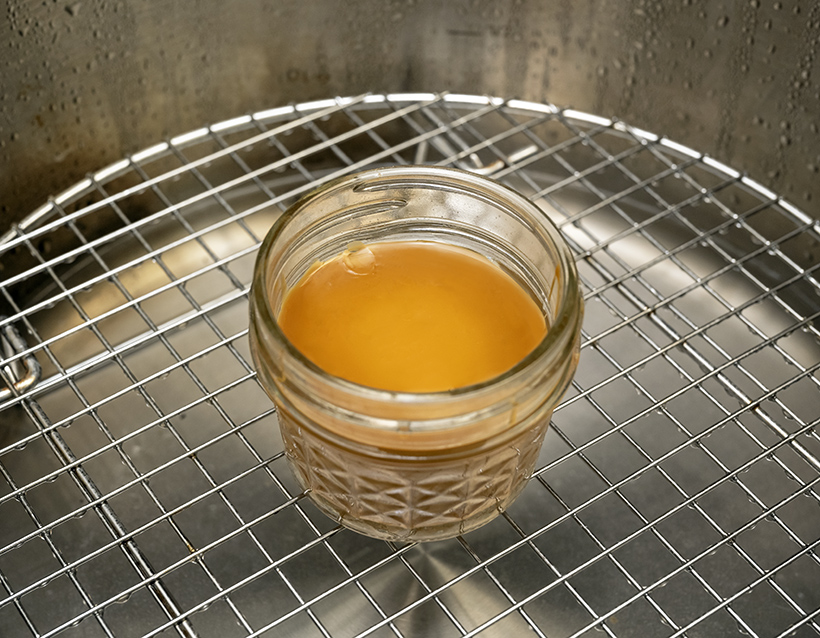
- Measure 80 g of dulce de leche (you can eat the rest with a spoon).
- Microwave the farmer cheese in a plastic container for about 30 seconds, until just warm. Add the dulce de leche and the corn starch, then process with a hand blender until smooth. Let cool, then refrigerate for 1 hour.
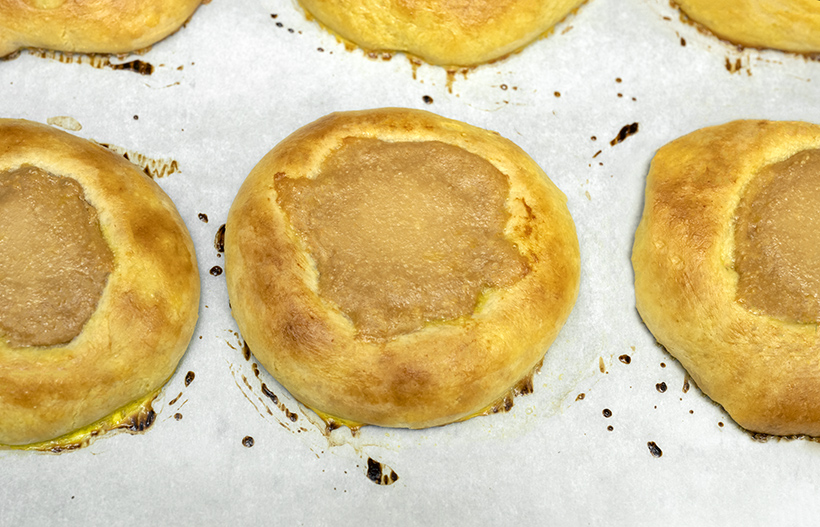
Chestnut cream filling
120 g cooked and peeled chestnuts
35 g heavy cream
40 g water
60 g sugar
0.2 g salt
3 g vanilla extract
6 g cognac
- Place the chestnuts, heavy cream, water, sugar, and salt into a small saucepan. Cover and bring to a simmer, then cook for 2 minutes over low heat.
- Transfer to a blender, add the vanilla extract and cognac, and blend until smooth. Transfer to a plastic container, let cool, then refrigerate for 1 hour.
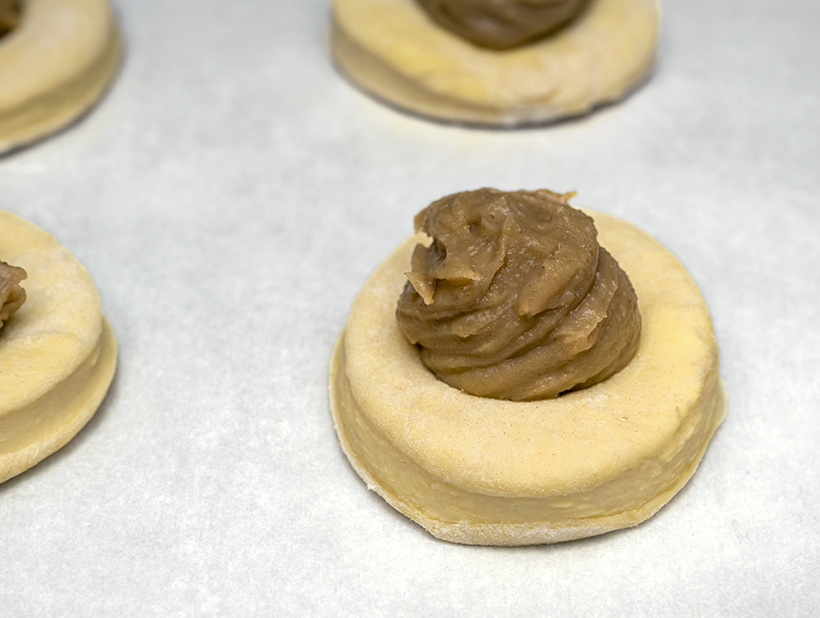
Poppy seed filling
60 g poppy seeds
3 g cocoa powder
100 g sweetened condensed milk
- Add the poppy seeds, cocoa powder, and sweetened condensed milk to a plastic container. Stir with fork, then refrigerate for 1 hour.
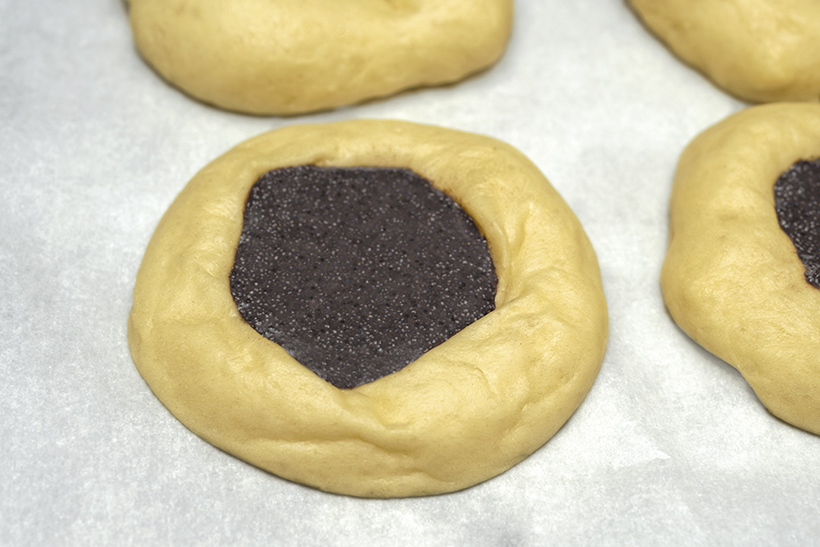
Blueberry filling
180 g blueberry preserves
10 g corn starch
- Place the blueberry preserves in a plastic container and microwave for about 30 seconds, until warm. Use a fork to stir in the corn starch, let cool, then refrigerate for 1 hour.
